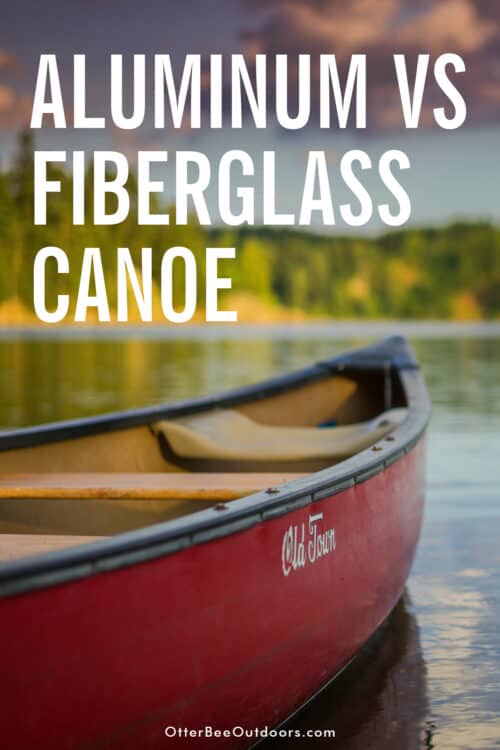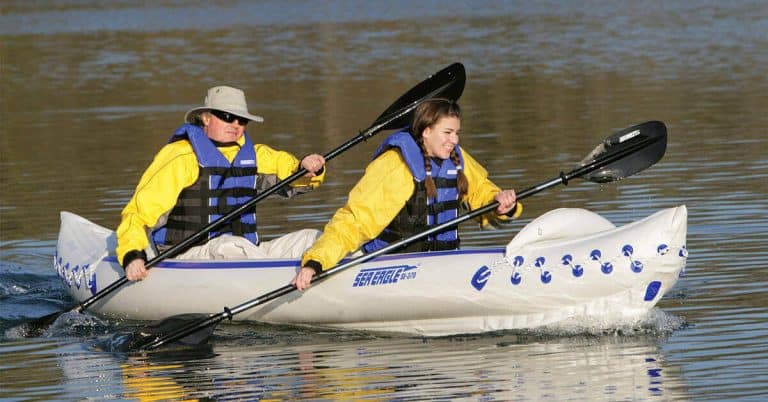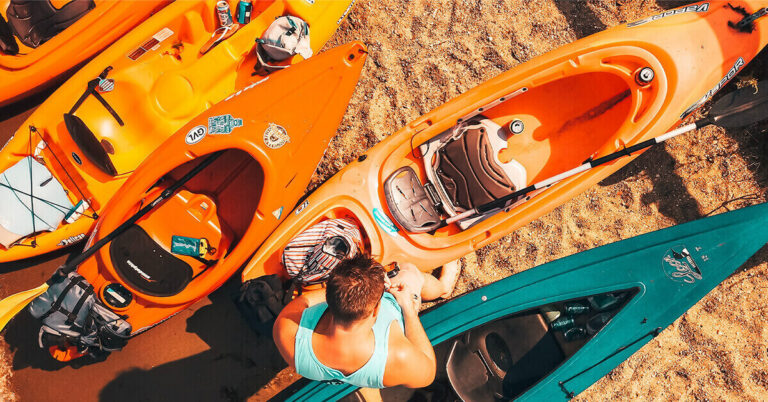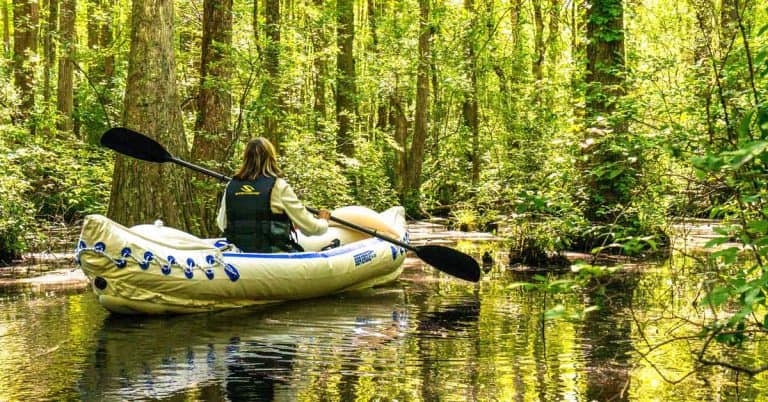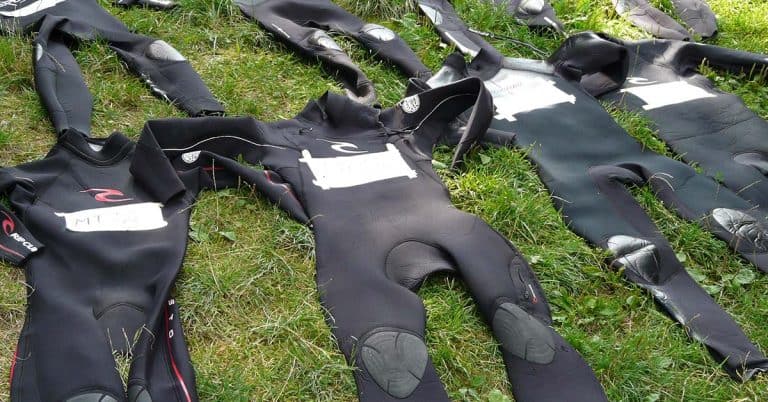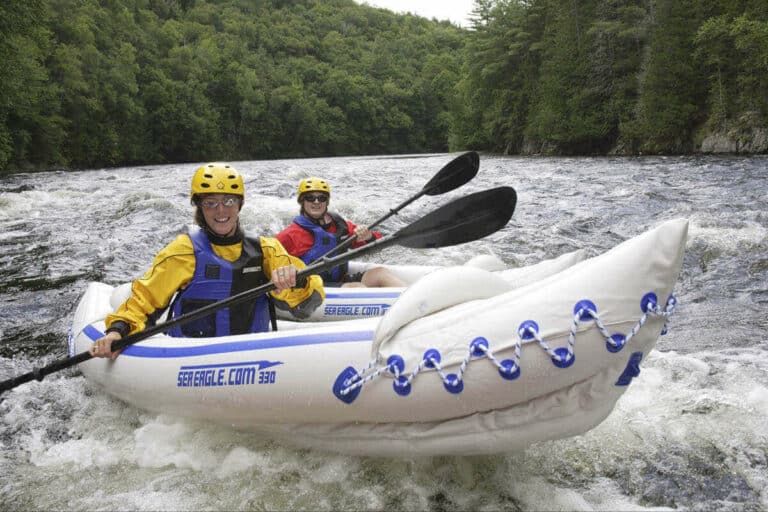Disclosure: I am compensated for purchases made through some links on this site. Click for details.
When adventurers set out to purchase a canoe, one critical decision is selecting the canoe material: aluminum or fiberglass. Both options offer their unique set of benefits and compromises that cater to different types of paddlers and environments. Fiberglass canoes are appreciated for their lighter weight and better performance, particularly in terms of speed and ease of maneuverability.
Aluminum canoes contrast with their pronounced durability and resistance to damage, making them suited for tougher conditions where impacts might be a concern. However, they are often heavier than fiberglass canoes and can be more cumbersome to handle both in and out of the water. The choice between the two materials extends beyond just weight and durability; it also encompasses considerations of maintenance, cost, and the very design features that define each canoe’s handling and stability on the water.
Key Takeaways
- Fiberglass canoes are preferred for lighter weight and maneuverability.
- Aluminum canoes offer greater durability for rougher conditions.
- Considerations include maintenance, cost, and design when choosing a canoe.
Understanding Canoe Materials
When selecting a canoe, the material it’s constructed from plays a pivotal role in its overall performance and durability. Canoes today are mostly made from materials like aluminum, fiberglass, or various composites, each with unique characteristics.
Aluminum Canoe Characteristics
Aluminum canoes are known for their durability and strength. This material enables the canoe to withstand harsh conditions with minimal maintenance. However, aluminum canoes are often heavier than their fiberglass counterparts, which can make transport and handling less convenient. They are typically less expensive, but the trade-off is a generally heavier vessel that may offer poorer performance in the water compared to lighter materials.
Fiberglass Canoe Characteristics
In contrast, fiberglass canoes are lightweight, which contributes to better maneuverability and ease of transport. Their construction allows for sharp entry and exit lines, improving performance. Fiberglass canoes, though, are prone to cracking and may require more frequent repair than aluminum, making them slightly higher maintenance. They tend to be more expensive than aluminum canoes but offer improved durability and lighter weight.
Other Canoe Materials
Aside from aluminum and fiberglass, there are a variety of materials used in canoe construction:
- Plastic/Composite Canoes: These canoes, made from plastics such as polyethylene, are often more affordable but less durable than either aluminum or fiberglass. Lightweight composites like Kevlar and carbon offer a balance between high performance and durability, although they can be expensive.
- Wooden Canoes: Wooden canoes offer traditional beauty and can be very durable, but they require considerable maintenance to preserve their structure and appearance.
- Royalex and Vinyl: These materials are used to manufacture canoes that deliver good durability and impact resistance. Royalex canoes, in particular, are known for their ability to return to their original shape after being deformed.
Comparative Analysis
In analyzing aluminum versus fiberglass canoes, it’s crucial to highlight the differences in durability, cost, repairability, and on-water performance. The choice between the two materials can significantly affect the canoeing experience, addressing specific needs and preferences.
Pros and Cons of Aluminum Canoes
Aluminum canoes are known for their durability and little maintenance requirements. They’re less expensive and can survive bumps and knocks from rocky rivers or shorelines. However, aluminum canoes reflect heat, can be noisy, and are heavier, which might affect their maneuverability.
Pros and Cons of Fiberglass Canoes
Fiberglass canoes offer lightweight construction which translates to better performance and an aesthetic advantage due to their smooth gel coat finish. While they’re more prone to cracking and damage by UV light, their appearance and performance often justify the extra care needed. Repairing fiberglass canoes can involve patch repairs or gel coat refinishes and might demand more frequent attention than aluminum alternatives.
Construction and Damage Repair
Aluminum canoes are built using either welding or rivets to join the aluminum sheets, resulting in a rigid structure that withstands impacts. In contrast, fiberglass canoes are constructed with layers of woven material and resin, creating a more flexible vessel. When damaged, aluminum canoes may require welding for fixes, whereas fiberglass canoes can usually be repaired with a gel coat or patch repair methods.
Performance and Stability
Despite being heavier, aluminum canoes are remarkably stable and reliable in rough water conditions. Fiberglass canoes, on the other hand, are crafted for excellent maneuverability and lower speed resistance, thanks to their lightweight nature and sleek design. The performance edge of fiberglass canoes often makes them the preferred choice for paddlers looking for speed and agility on the water.
Practical Considerations
When choosing between an aluminum and a fiberglass canoe, practical considerations such as cost-effectiveness, maintenance requirements, and intended use are paramount. Each material offers distinct benefits and limitations that one should weigh before making a purchase.
Price and Budget
The initial cost of a canoe is a crucial factor. Fiberglass canoes are generally more expensive than their aluminum counterparts due to their intricate manufacturing process, making aluminum canoes a more budget-friendly option. However, the long-term value should also be considered, as a higher upfront investment in a fiberglass canoe may translate to better performance and less frequent need for repairs.
Maintenance and Care
Maintenance requirements differ markedly between the two materials. Aluminum canoes boast an easy maintenance routine, largely needing just a simple rinse with water after use, and they’re highly resistant to UV rays and weather, meaning less long-term upkeep. On the other hand, fiberglass canoes demand more meticulous care, including waxing and protection from the elements, to maintain their performance and appearance.
Usage and Applications
The choice between aluminum and fiberglass greatly depends on intended use. Aluminum canoes are durable and suited for activities like fishing and heavy-duty wilderness trips, where the canoe may be subject to rougher treatment. Fiberglass canoes, being lighter and more agile, are preferred for water sports and recreational paddling, offering sharper handling and faster speeds. Both types are used by camps and outfitters, but the selection often hinges on the specific conditions they expect to encounter.
Design Features
When comparing aluminum and fiberglass canoes, one must consider the hull design and its impact on performance, the implications of canoe weight for portaging, and the canoe’s dimensions and how they influence shape and aesthetics.
Hull Designs and Performance
Aluminum canoes typically have a sturdy design that is less responsive to sharp turns but offers stability and durability. Fiberglass canoes boast sharper entry and exit lines, making them high-performance vessels, particularly in terms of speed and maneuverability. Each material’s hull designs are crafted to cater to these performance characteristics, with aluminum prioritizing resilience and fiberglass aiming for efficiency in the water.
Canoe Weight and Portaging
The weight of a canoe significantly affects the ease of portaging. Aluminum canoes are often heavier; for instance, a standard aluminum canoe weighs more than a fiberglass model of the same dimensions. Consequently, a lightweight fiberglass canoe can be more comfortable to carry over land, which could be a crucial factor for those who frequently transport their canoe between bodies of water.
Dimensions and Shape
The dimensions, including the length and width of a canoe, define its internal space, stability, and paddling dynamics. Aluminum canoes tend to have a more robust structure, which can limit their length and width variations. In contrast, fiberglass allows for a more varied shape and structure, providing options that can be tailored to specific water conditions and paddling styles, while potentially offering more aesthetically pleasing designs due to the material’s malleability.
Making a Choice
When selecting between an aluminum and a fiberglass canoe, beginners and seasoned paddlers alike should weigh the importance of durability and environmental factors. This section explores the specific considerations for those new to canoeing as well as the impact of various environmental conditions on the two materials.
Considerations for Beginners
Stability: For beginners, a canoe that offers stability is crucial. Fiberglass canoes are often praised for their smoother glide and stability in water, which can be more forgiving for new paddlers. In contrast, aluminum canoes, while also stable, can feel more rigid.
Durability: Aluminum canoes boast superior durability, with a high resistance to punctures from underwater obstacles. They can endure the occasional rockslide with less damage. This strength makes them a practical choice for beginners who may not yet be skilled in avoiding hazards.
Environmental Factors
Extreme Temperatures: One should consider the canoe’s behavior under extreme temperatures. Aluminum canoes can become quite hot to the touch in direct sunlight or uncomfortably cold in frigid conditions. Fiberglass canoes handle a wide range of temperatures better, offering a more consistent experience.
UV Light: Prolonged exposure to ultraviolet (UV) light affects both materials differently. Fiberglass canoes can fade and weaken over time if not properly coated with a UV-resistant finish. Aluminum, however, remains largely impervious to UV light, requiring less maintenance in this regard.
Canoeists should recognize that while both aluminum and fiberglass are robust materials, neither is designed to withstand scenarios such as nuclear war. Practical factors, like those discussed, should guide one’s choice for a recreational vessel.
Final Thoughts
When comparing canoe materials, it’s crucial to balance your priorities with the pros and cons of each type. Aluminum canoes are celebrated for their durability and low maintenance, making them a wise choice for rough conditions and those valuing longevity. They are tough and can handle impacts that might damage other materials.
In contrast, fiberglass canoes tend to offer better performance on the water, with their lighter build allowing for more speed and maneuverability. They are often preferred for more serene and controlled water conditions, where their lightweight nature can be fully appreciated. However, fiberglass canoes may require more frequent repairs and come with a higher price tag.
In summary, the choice between aluminum and fiberglass canoes comes down to the intended use, budget, and personal preference regarding maintenance and performance. Consumers are advised to weigh these considerations carefully to select the material that will best serve their canoeing needs.
Related Content:
- Canoe & Kayak Safety Equipment Checklist
- Canoe vs Kayak: Exploring the Pros and Cons of Each
- Sea Eagle Travel Canoe 16 Review
